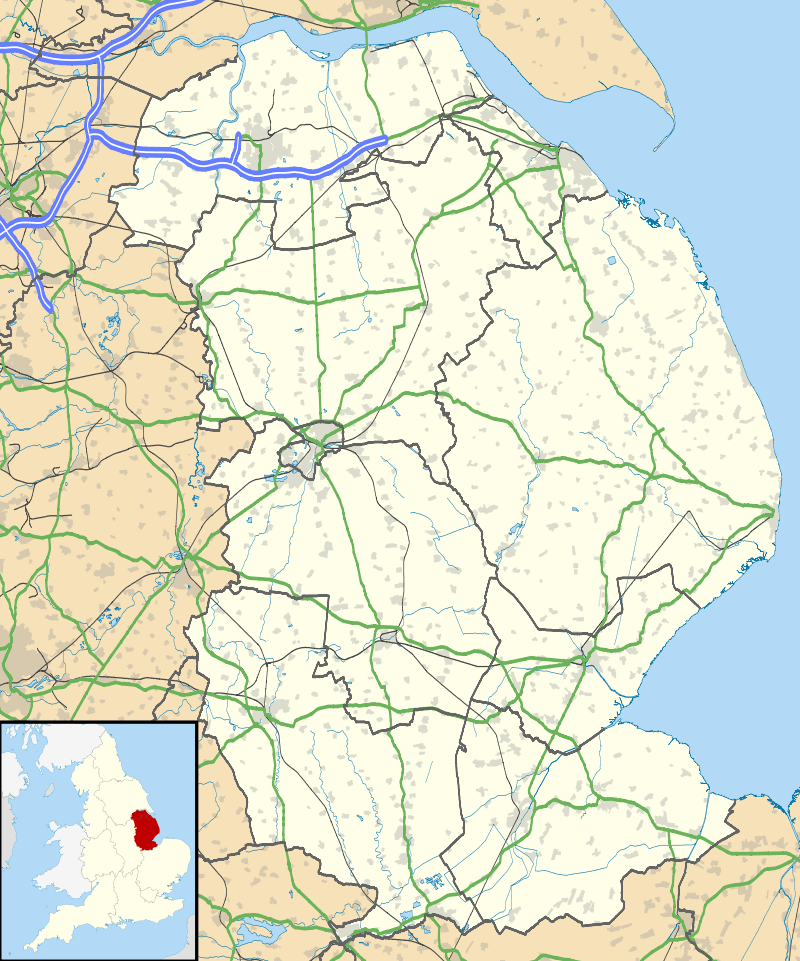Thorpe Tilney
| Thorpe Tilney | |
 River Witham at Thorpe Tilney Dales |
|
 Thorpe Tilney |
|
| OS grid reference | TF120572 |
|---|---|
| – London | 110 mi (180 km) S |
| Civil parish | Timberland |
| District | North Kesteven |
| Shire county | Lincolnshire |
| Region | East Midlands |
| Country | England |
| Sovereign state | United Kingdom |
| Post town | Lincoln |
| Postcode district | LN4 |
| Police | Lincolnshire |
| Fire | Lincolnshire |
| Ambulance | East Midlands |
| EU Parliament | East Midlands |
| UK Parliament | Sleaford and North Hykeham |
|
|
Coordinates: 53°06′03″N 0°19′41″W / 53.100891°N 0.328183°W
Thorpe Tilney is a hamlet in the civil parish of Timberland (where the population is included) in the district of North Kesteven, in the county of Lincolnshire, England. The hamlet is located directly south of Timberland, and stretches from Thorpe Tilney on the B1189 eastwards through Thorpe Tilney Fen to Thorpe Tilney Dales beside the River Witham. Thorpe Tilney was a civil parish between 1866 and 1931 when it was abolished to enlarge Timberland.[1]
Landmarks
In 1545 three houses in Thorpe Tilney, a possession of the dissolved Kyme Priory, were granted to John Broxholme and John Bellowe. A farm on a slight hill east of the Car Dyke may represent the site, which is known locally as Priory Hill.[2]
Thorpe Tilney Hall is a Grade II listed red brick small country house dating from 1740 with later alterations and additions.[3] Also listed are the Orangery and attached garden dating from 17th Century,[4] and the stable block and cottage dating from 1740.[5] The current Hall replaces an earlier medieval building, the ruin of which was demolished in 1969, which stood 100 yards (91 m) away on the site of Hall Farm. This earlier Hall was struck by lightning and destroyed in 1705, and the Orangery and its associated walled garden relate to this earlier building, and are dated c. 1680.The Georgian Hall was built by the Whichcote family as a dower house for their main seat, Aswarby Park, the other side of Sleaford, and one of their tombs can be seen in the adjacent Timberland church. The Whichcotes continued to own Thorpe Tilney, with a 2,000 acres (8 km2) estate, until 1918, when much of the land was bought by the County Council to provide small-holdings for returning soldiers. By 1944 the Hall's roof had fallen in, but it was rescued by Roy Rothery who began a partial restoration programme, completed in 1970 by the Stockdale family. Also in the grounds is the 1977 Opera Pavilion designed by Francis Johnson of Bridlington, with stained glass by John Piper.
Evans Farmhouse, originally an inn on the then Billinghay to Metheringham road, is also a listed building, built of red brick and dating from 1782.[6]
References
- ↑ "Thorpe Tilney". Vision of Britain. University of Portsmouth. Retrieved 14 August 2011.
- ↑ "Tilney". Pastscape. English Heritage. Retrieved 14 August 2011.
- ↑ "Thorpe Tilney Hall". National Heritage List for England. English Heritage. Retrieved 14 August 2011.
- ↑ "Orangery at Thorpe Tilney Hall". National Heritage List for England. English Heritage. Retrieved 14 August 2011.
- ↑ "Stable block at Thorpe Tilney Hall". National Heritage List for England. English Heritage. Retrieved 14 August 2011.
- ↑ "Evans Farmhouse". National Heritage List for England. English Heritage. Retrieved 14 August 2011.